|
On Spitsbergen, we are studying combined effects of goose grazing and global warming on an arctic tundra. The project
is called FRAGILE and is financed by the
European Community.
Maarten Loonen visited the field site and made the following report.
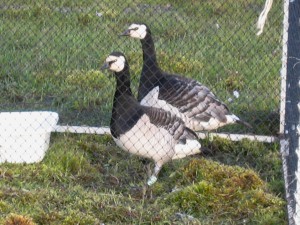 |
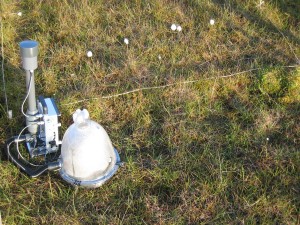 |
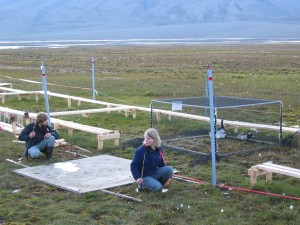 |
|
| With Barnacle Geese in captivity, we simulate normal grazing pressure and overgrazing on ungrazed vegetation. |
In the plastic jar, the amount of carbon dioxide is measured in inflowing and outflowing air. From these Sophie calculates the carbon balance. |
The geese are placed on the vegetation plots. All treatments are arranged in blocks, and there are 5 blocks in total. The plots are surrounded by boardwalks to protect the vegetation. |
|
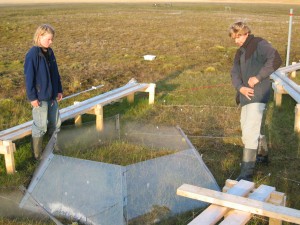 |
Goose grazingDuring night time, but still in daylight during the arctic summer, Richard Ubels and Laura Hondshorst are grazing plots with captive geese.
Tonight, a "temperature enhanced" plot will be grazed. First they remove the open top chamber, which is used to warm the plot a few degrees. |
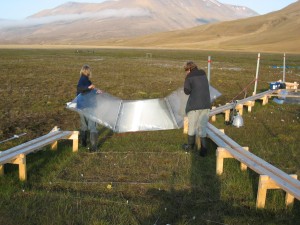 |
|
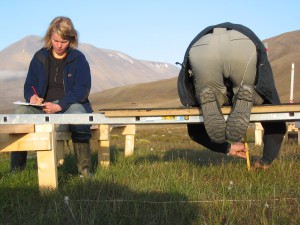 |
The vegetation is measured before and after the grazing treatment. How much food is there available for the geese? Wich food plants do they select first? How do the geese behave when the vegetation depletes and becomes overgrazed? All these questions will be answered in the end. |
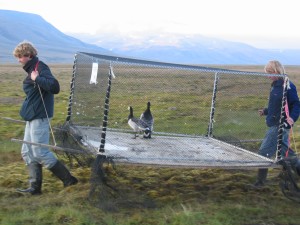 |
The geese are transported to the plot. We have constructed a special platform inspired by the cheese bearers from Alkmaar, the Netherlands. In this way, we don't need to touch the geese and they are less stressed.
The geese have been caught on Spitsbergen at the beginning of the season. They will be released at the end of the season. |
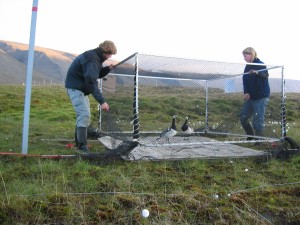 |
The cage is placed on the plot. Normally, the geese start to graze immedeately. They first select all horse tail Equisetum, than they swith to the grasses. When all grasses are eaten, they continue grazing mosses. These goose diets have been confirmed by analysing plant fragments from the goose droppings under the microscope. |
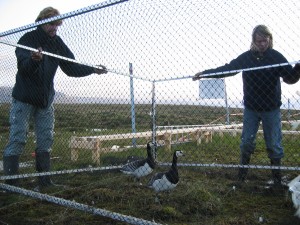 |
|
VegetationThe next pictures are an example of the effect of grazing on the wet vegetation type. The pictures are taken on 6 July 2003.
For normal grazing pressure, the geese have been one hour on the plot. For heavy grazing pressure, the goose have been seven hours on the plot.
A team of plant ecologists will measure the effects on the vegetation. |
| Ungrazed |
Normal grazing pressure |
Heavy grazing pressure |
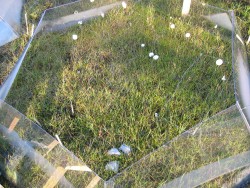 |
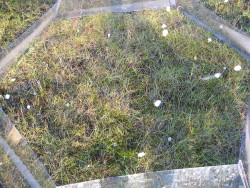 |
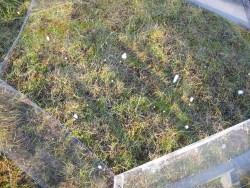 |
By placing open top chambers (OTC) on the vegetation,
the temperature is enhanced a few degrees, simulating global warming. |
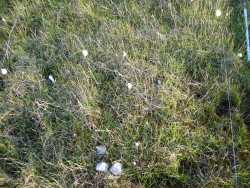 |
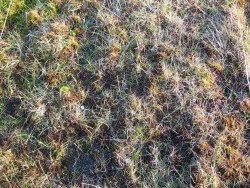 |
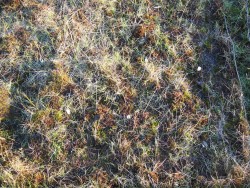 |
Details of the vegetation in each plot. |
The teamIn 2003, the FRAGILE team of the experimental study in Adventdalen consisted of 18 people in total.
Here, we are invited for dinner by the coordinator of the projectAd Huiskes, together with some other scientists from the reindeer project in Semmeldalen (their names given in italics).
From left to right, the follwing people are on this picture: Laura Hondshorst, Gerben van der Geest, Richard Ubels, Justin Irvinex,
Ad Huiskes, Sophie Sjögersten, Sophie's son Jon and husband Will, x, x, François Mouget, x, x, Jemma Gornall, Elisabeth Cooper, Björn Solheim, Anne Mette Pedersen and René van der Wal.
Missing on this picture are the photographer, Maarten Loonen and Ingebjorg Jonnsdottir, who came later. Sarah Woodin was not in Lonhyearbyen on this date. The project is truly European with people from the Netherlands, UK, Sweden and Norway. |
 |
|















